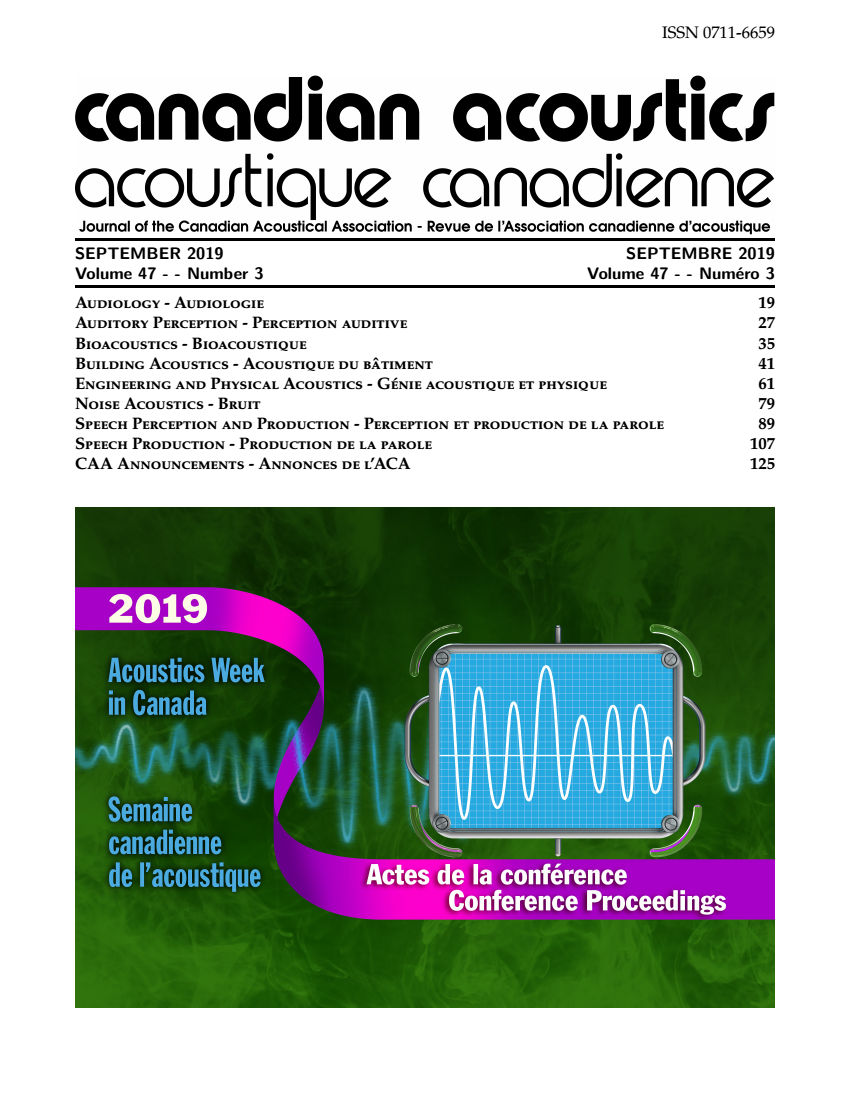Hearing Protectors Fit-Testing Using Smartphones: Preliminary Data
Abstract
To quickly estimate the amount of attenuation provided by any given hearing protection device (HPD) on any given individual, a smartphone app has been developed. The app features an audio stimulus generator to generate loud tones over the smartphone (or tablet) embedded loudspeakers, a graphical user interface where the user can report the count of audio stimuli perceived, and an attenuation prediction algorithm able to estimate the overall attenuation of the HPD under test, only knowing its type. The proposed approach relies on a supra-threshold method where sequence of 1 kHz-centered narrowband stimuli are played in decreasing levels with steps of 5 dB. The user simply counts the number of tonal bursts perceived before stimuli become inaudible in two conditions: with open ears and with both ears occluded with the HPD. The two counts values are entered within the app to compute an estimate of the overall HPD attenuation. This estimate is computed using the “octave band method” as an C-A overall attenuation, that represents the average difference between the C-weighted overall sound pressure level and the A-weighted overall sound pressure level attenuated by the HPD. The measured attenuation values using REAT and using the tablet are compared for two types of earplugs: a roll-down foamplug and premoded earplug. They show that while the REAT values obtained at 1 kHz are poorly predicted, the overall REAT attenuation values are better predicted and that a polynomial regression model could possibly be built to predict with reasonable accuracy the overall attenuation of foamplugs -and many other types of HPDs- using only a tablet or smartphone generating 1 kHz tonal bursts.
Additional Files
Published
How to Cite
Issue
Section
License
Author Licensing Addendum
This Licensing Addendum ("Addendum") is entered into between the undersigned Author(s) and Canadian Acoustics journal published by the Canadian Acoustical Association (hereinafter referred to as the "Publisher"). The Author(s) and the Publisher agree as follows:
-
Retained Rights: The Author(s) retain(s) the following rights:
- The right to reproduce, distribute, and publicly display the Work on the Author's personal website or the website of the Author's institution.
- The right to use the Work in the Author's teaching activities and presentations.
- The right to include the Work in a compilation for the Author's personal use, not for sale.
-
Grant of License: The Author(s) grant(s) to the Publisher a worldwide exclusive license to publish, reproduce, distribute, and display the Work in Canadian Acoustics and any other formats and media deemed appropriate by the Publisher.
-
Attribution: The Publisher agrees to include proper attribution to the Author(s) in all publications and reproductions of the Work.
-
No Conflict: This Addendum is intended to be in harmony with, and not in conflict with, the terms and conditions of the original agreement entered into between the Author(s) and the Publisher.
-
Copyright Clause: Copyright on articles is held by the Author(s). The corresponding Author has the right to grant on behalf of all Authors and does grant on behalf of all Authors, a worldwide exclusive license to the Publisher and its licensees in perpetuity, in all forms, formats, and media (whether known now or created in the future), including but not limited to the rights to publish, reproduce, distribute, display, store, translate, create adaptations, reprints, include within collections, and create summaries, extracts, and/or abstracts of the Contribution.


